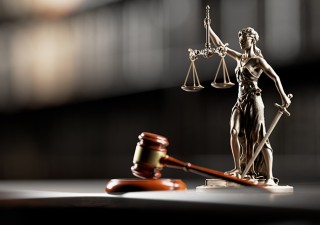In China, the principle of “whoever asserts must prove” places the main burden of proof on the plaintiff in civil litigation, particularly in patent infringement cases. Therefore, if a right holder intends to file a lawsuit, it becomes crucial to submit compelling evidence to support their claims. Without sufficient evidence, the court may not uphold their claims, leading to unfavourable consequences such as losing the case[AL1] . With regard to the evidence that a right holder must prepare when pursuing a patent infringement lawsuit, this article will outline in the three aspects, evidence of patent rights, evidence of infringement, and evidence of compensation and reasonable expenses.
Evidence of patent rights
In a patent infringement lawsuit, the right holder must present evidence to establish the scope, ownership, and validity of the patent in question. This can be accomplished by submitting essential documents such as a copy of the granted patent publication, patent certificate, a copy of the patent register and proof of payment of the recent annual fee. These pieces of evidence serve to demonstrate the right holder’s legal entitlement to the patent and provide a foundation for their claims against any potential infringers.
In addition, certain special circumstances may require the right holder to provide targeted additional evidence:
Change of Ownership. If the patent involved has undergone a change of ownership, the right holder must furnish corresponding proof of this change to align with their current identity as the plaintiff.
Amended Claims. If the patent has gone through an invalidation process resulting in claim amendments, the amended claims accepted by the CNIPA should be provided to determine the scope of protection for the patent in question.
Non-Patentee Plaintiffs. If the plaintiff is not the patentee, they must present other evidence to establish their right to bring a patent infringement lawsuit. For instance, an exclusive licensee can sue independently with the exclusive license agreement between the licensee and the patentee. A sole licensee may also sue without the patentee, necessitating the submission of the corresponding sole license contract along with evidence of the patentee’s express waiver to sue or not to sue. An ordinary licensee can only sue alone if explicitly authorized by the patentee in the license agreement. In such cases, evidence should be provided to demonstrate that the patentee has granted special authorization for the ordinary licensee to sue independently in the license agreement.
Utility Model or Design Patent Evaluation Report. For utility model or design patents, it is advisable to submit the patent evaluation report issued by the CNIPA to reduce the likelihood of infringement litigation being suspended due to an invalidation proceeding initiated against the patent.
The rights holder shall submit appropriate evidence according to their actual situation to meet legal requirements, expediting the court's acceptance and allowing the litigation procedure to promptly focus on the evidence of infringement and the determination of infringement.
Evidence of infringement
Evidence of infringement is crucial in patent infringement litigation as it establishes that the defendant has violated the right holder’s patent rights. This evidence plays a decisive role in determining the outcome of the case.
In patent infringement litigation, the right holder must not only submit evidence to prove that the accused infringement falls within the scope of protection of the patent in question but also must demonstrate that the defendant has committed acts of infringement. This encompasses the unauthorized exploitation of the patent for production or business purposes, such as making, using, offering to sell, selling, or importing the patented product, etc. which varies based on the patent type.
In practice, it is advisable for the right holder to conduct an infringement analysis when identifying a suspected infringing product. This analysis helps confirm whether the product indeed falls within the scope of protection of the patent in question. If necessary, relevant technical documents, or appraisal, test or forensic reports can be prepared to prove or assist in proving infringement.
Once infringement is confirmed, a more thorough and extensive investigation should be carried out against the infringer and the infringing activities. This includes diligent collection of relevant evidence pertaining to the infringer’s willfulness, the area and duration of the infringement, the channels and platforms selling the infringing products, as well as the nature and circumstances of the infringing acts. These will establish a solid foundation for determining the infringement, enforcing against it, and seeking compensation.
While collecting evidence, it is important to also focus on preserving the relevant evidence. To prevent the loss of evidence and enhance its evidentiary value, a common technique is to preserve the evidence through notarization. For instance:
Purchase Notarization. This method entails procuring the suspected infringing product in the presence of a notary public. The entire purchase and delivery process is witnessed and notarized. The purchased product, along with relevant contracts, sales invoices, payment vouchers, and associated documentation, is sealed and notarized.
Webpage Notarization. With a notary public as a witness, screenshots or printouts of relevant webpages are taken from the defendant’s official website, WeChat subscriptions, or other online platforms. These materials contain promotional information, sales records, or assurances pertaining to the accused infringing products.
Exhibition Notarization. This approach involves capturing photos or videos, in the presence of a notary public, of the accused infringing products exhibited by the defendant at trade shows or exhibitions. Additionally product promotional materials or samples are obtained under notarial observation.
It is essential to note that if the above evidence is not notarized, and the defendant denies manufacturing, selling, or offering to sell the accused infringing products, or if the defendant deletes information from relevant webpages during the litigation process that cannot be verified, the submitted evidence might not be accepted by the court. Therefore, notarization serves as a critical step in ensuring the credibility and admissibility of the evidence in court. By notarizing the evidence, the right holder places the evidence in a better position to enhance their chances of a successful outcome.
Furthermore, in cases where the rights holder is unable to gather certain evidence due to objective reasons, it is also possible, based on the provision of preliminary evidence, to request the court conduct an investigation and gather evidence. For evidence that is at risk of being destroyed or may be difficult to obtain in the future, the right holder can petition the court to implement evidence preservation measures.
By meticulously preparing and presenting evidence of infringement, the right holder strengthens their position in the patent infringement lawsuit, thereby increasing the likelihood of a judgment in their favour.
Evidence of compensation and reasonable expenses
In patent infringement cases, evidence related to compensation and reasonable expenses is critical for determining the financial consequences of the infringement. The patent law (Article 71) specifies the factors considered in assessing compensation, which can be based on the actual losses suffered by the right holder or the profits earned by the infringer due to the infringement. Where determining the losses suffered or the profits earned is challenging, the multiple of the patent licensing fee may be used. For willful infringement, if the circumstances are serious, punitive compensation may be adopted. Where determining the losses suffered, the profits earned and the licensing fee are challenging, statutory compensation may apply. The compensation can also include reasonable expenses for stopping the infringement. Therefore, investigating and collecting evidence concerning these aspects is crucial for successfully obtaining compensation for damages and expenses incurred in stopping infringement.
Actual losses suffered by the right holder
The related provisions of the Supreme People’s Court outline a calculation method. The actual losses can be computed by multiplying the total number of sales of patented products reduced due to infringement by the reasonable profit per patented product. If determining the total number of sales reduced is challenging, the product of the total number of infringing products sold in the market and the reasonable profit per patented product can be considered.
To claim compensation using this method, the right holder must provide evidence supporting the total number of sales of patented products affected by the infringement or the total number of infringing products sold in the market, along with evidence establishing the reasonable profit per patented product.
In practice, there may be many factors that cause losses, so it is difficult to prove the actual loss suffered by the right holder due to the infringement. Therefore, the profits earned by the infringer are often used as a breakthrough.
Profits earned by the infringer
Pursuant to the related provisions of the Supreme People’s Court, the profits earned by the infringer can be calculated based on the product of the total number of infringing products sold in the market and the reasonable profit per infringing product. This typically involves determining the infringer’s operating profit. In the case of infringers solely engaged in infringement, the profits earned can be calculated based on the sales profit.
To support a compensation claim based on this calculation method, the right holder should provide a chain of evidence to prove the total number of sales of infringing products and the profit margin of these products. Investigation of the infringement may cover traditional or internet online transactions, sales and promotion. The right holder can scrutinize records from the infringer’s official website, WeChat public accounts, brochures, annual reports of listed companies, and prospectuses for information regarding the production, sales scale, and profitability of infringing products. Data such as sales prices and quantities of infringing products collected from third-party platforms like Alibaba, JD.com, and offline retail platforms like supermarkets and shopping malls can also be valuable. Moreover, industry research reports detailing sales volume, market share, sales prices, and average profit margins of infringing products within the relevant sector can be leveraged to gather relevant evidence.
Furthermore, with preliminary evidence provided of the profits earned by the infringer, the right holder can request the court to summon accounting evidence related to patent infringement possessed by the infringer.
In practice, in many cases where substantial compensations have been successfully secured, the right holders’ claims have been substantiated by demonstrating the profits earned by the accused infringer due to the infringement and gaining support from the courts.
Referring to the multiple of the patent licensing fee
As per the related provisions of the Supreme People’s Court, a reasonable multiple of the patent licensing fee can be considered in determining compensation. To claim compensation using this method, the right holder must provide evidence of the licensing agreement, proof of actual payment of the licensing fee (e.g., transfer records), and evidence of the agreement's execution or recording as well as usual standards of the licencing fee for the patent in question in the industry.
If relevant evidence is lacking, this calculation method is generally less considered.
Punitive compensation
In cases of willful patent infringement with severe circumstances, the law stipulates that punitive compensation can be determined at more than one time and less than five times the amount determined using the methods described in the three subsections above.
For the right holder, applying punitive compensation in patent infringement litigation not only serves as a greater deterrent against infringement but may also lead to higher compensation. When requesting the application of punitive compensation, the right holder needs to provide evidence proving the accused infringer’s willful infringement in terms of subjective willfulness and the severe circumstances of the infringement objectively.
To achieve this, evidence can be gathered concerning the accused infringer's awareness and interaction with the infringed patent, evidence of prolonged infringement duration, as well as evidence of a broad and substantial scope of infringement. These pieces of evidence can be utilized to demonstrate the subjective willfulness behind the infringement and the severity of the circumstances.
Statutory compensation
In situations where determining the right holder’s losses, infringer’s gains and licensing fees proves difficult, the court will establish statutory compensation. This is the prevailing method used by most patent infringement litigation cases to ascertain compensation. The court generally determines a specific compensation amount ranging from a minimum of Rmb30,000 to a maximum of Rmb5 million (US$4,100 to US$685,000) based on factors such as the type of patent right, the nature of the infringing act, and the circumstances involved.
Consequently, if the right holder is able to present relevant evidence substantiating these factors (e.g., the degree of subjective fault in the defendant's infringement, the duration of the infringing act, the scale of infringement), it can significantly influence the court’s determination of the compensation amount.
Reasonable expenses
In patent infringement litigation, the right holder can request compensation for reasonable enforcement expenses incurred in stopping the infringing activities. They may include attorney fees, notary fees, travel expenses, the costs related to purchasing infringing products, fees for infringement product testing, translation expenses and more. To support this claim, it is necessary to provide evidence such as contracts, invoices and payment receipts demonstrating the payment of these enforcement expenses.
The right holder should ensure the proper retention of relevant contracts, payment receipts, and work records to effectively substantiate the objective facts of the enforcement expenditures. This approach aims to secure the highest possible level of court support for the reasonable enforcement costs.
Summary and suggestions
In patent infringement litigation, the success of the right holder’s case hinges on their ability to present compelling evidence and gather relevant information comprehensively and meticulously. To increase the likelihood of winning the case or obtaining substantial compensation, the right holder should follow these key points:
- Actively Provide Evidence: The right holder must proactively submit evidence to substantiate their claims. This includes evidence establishing patent rights, ownership, and validity, as well as evidence of infringement and damages caused and any additional targeted evidence needed for special circumstances.
- Comprehensive Collection: Collecting evidence in a comprehensive and detailed manner is crucial, including evidence to prove the existence of infringement, willful infringement, the scope, area and duration of the infringement, serious circumstances, etc. When necessary the right holder may request the court to conduct an investigation and gather evidence or implement evidence preservation measures.
- Timely Preservation: To prevent the loss of evidence and challenges from the defendant, the right holder should diligently preserve evidence related to patent infringement, including notarizing evidence when appropriate. This ensures the credibility and admissibility of evidence in court.
By adhering to these guidelines, the right holder can strengthen their position in the patent infringement lawsuit and improve their chances of a successful outcome or obtaining adequate compensation for the damages incurred. Diligent preparation and presentation of evidence are pivotal in achieving a favourable resolution in patent infringement litigation.
About the authors
Xiao Ning works as a patent attorney and a group leader at AFD China. She passed the National Judicial Examination in 2007 and joined AFD China in 2008. She has extensive experience in all phases of patent prosecution and enforcement. Her primary focus is on patent invalidation, litigation, arbitration and administrative resolutions. She has also prepared and prosecuted numerous patent applications with a broad spectrum of technical fields including telecommunications, signal processing, electro-mechanical devices, e-commerce, consumer products and medical devices.
Mingzhao Yang is president of AFD China Intellectual Property Law Office. He leads the firm’s strategic management and operation teams and focuses on IP matters including prosecution, post-grant proceedings, dispute solutions, litigation, and counselling. Yang is a patent attorney registered before the CNIPA and patent litigation attorney registered before the SPC. He obtained his bachelor of engineering degree from Beijing University of Technology.
Xia Zheng is founder of AFD China, and a patent attorney, trademark attorney and attorney at law. She started her career in IP practice in 1987 and practices in many areas of the field, especially IP strategy, prosecution, post-grant proceedings and IP-related litigation. Zheng participates actively in the industry and is recommended as leading practitioner by numerous publications, including MIP’s IP Stars. She was named a National IP Talent in 2016, Beijing Outstanding Patent Attorney of 2014 and an Excellent Legal Professional of Haidian in 2012.











